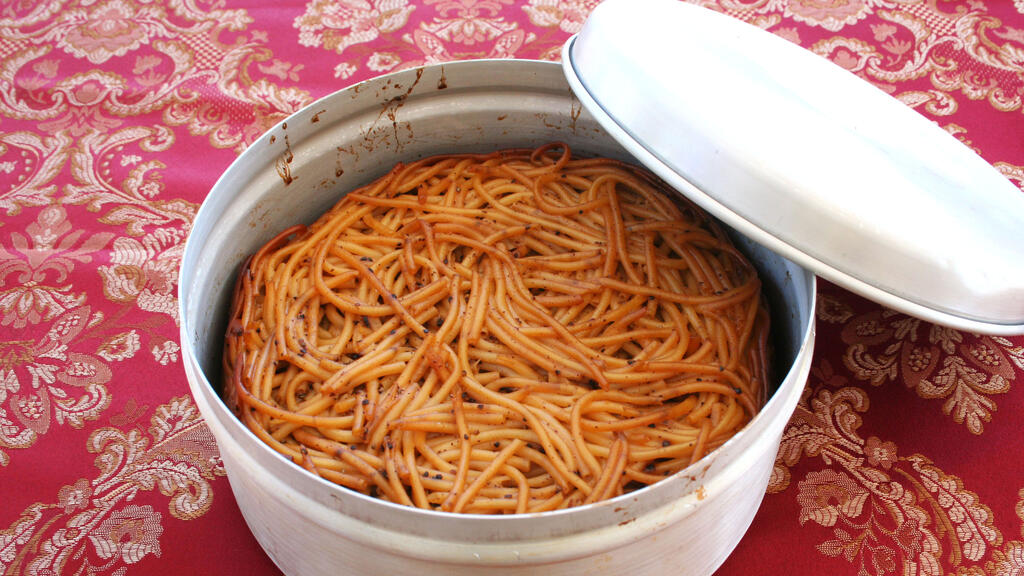Yerushalmi kugel reached second place on the list of the 100 worst foods in the world, ranked by the international food website Tasteatlas. The ranking is based on audience votes.
A second Jewish dish appears on the unflattering list at number 51: haroset.
More stories:
The explanatory notes on the website for Yerushalmi kugel identify it as a "savory casserole made with thin cooked noodles that are coated in caramelized sugar. After it is mixed with eggs, olive oil, pepper, and salt, the combination is placed in a pan and then baked until firm. The dish first appeared in the 18th century, when European Jews brought culinary traditions of preparing similar baked casseroles.
"As the name suggests, the dish originated in Jerusalem (Yerushaláyim), where it is still popular and available at bakeries and street markets. It is also a staple dish served on Shabbat and other Jewish holidays. Yerushalmi kugel can be baked in round or rectangular pans."
1 View gallery


Yerushalmi kugel was ranked number 2 on the list of the 100 worst foods in the world
(Photo: Osnat Laster)
Haroset is classified in the category dips and spreads. According to the website, it is "traditionally eaten in remembrance of the enslaved Jews in ancient Egypt as one of the symbolic foods on the Passover Seder Plate." The site also says that "the fruit and nut paste known as charoset is used either as a relish for dipping or as a spread to be eaten with Jewish unleavened flatbread called matzah."
It acknowledges that recipes for charoset "vary depending on different Jewish subgroups, ranging both in type and the indicated number of ingredients."
The 100 Worst Rated Foods in the World list is topped by Hákarl, which is Iceland's national delicacy made from cured shark flesh.
According to Tasteatlas, "The meat is first fermented for up to three months, then hung and left to dry for another four to five months. There are two varieties of the dish: the chewy, reddish glerhákarl, and tender, white skyrhákarl. It is often considered to be food for the brave, because the high ammonia content often makes people gag."
Other dishes on the list include fried spider; devilled kidneys; Smalahove (sheep's head); chocolate-covered bacon; Stegte sild (fried pickled herring); Hormiga culona ( fat-bottomed ant); Marmite spread; jellied eels; Blodpudding (made with animal blood); Balut (fertilized duck egg); and frog eye salad.
Some 265,170 people voted on the rankings as of December 1. And don't forget the site's disclaimer: "TasteAtlas Rankings should not be seen as the final global conclusion about food. Their purpose is to promote excellent local foods, instill pride in traditional dishes, and arouse curiosity about dishes you haven’t tried."


